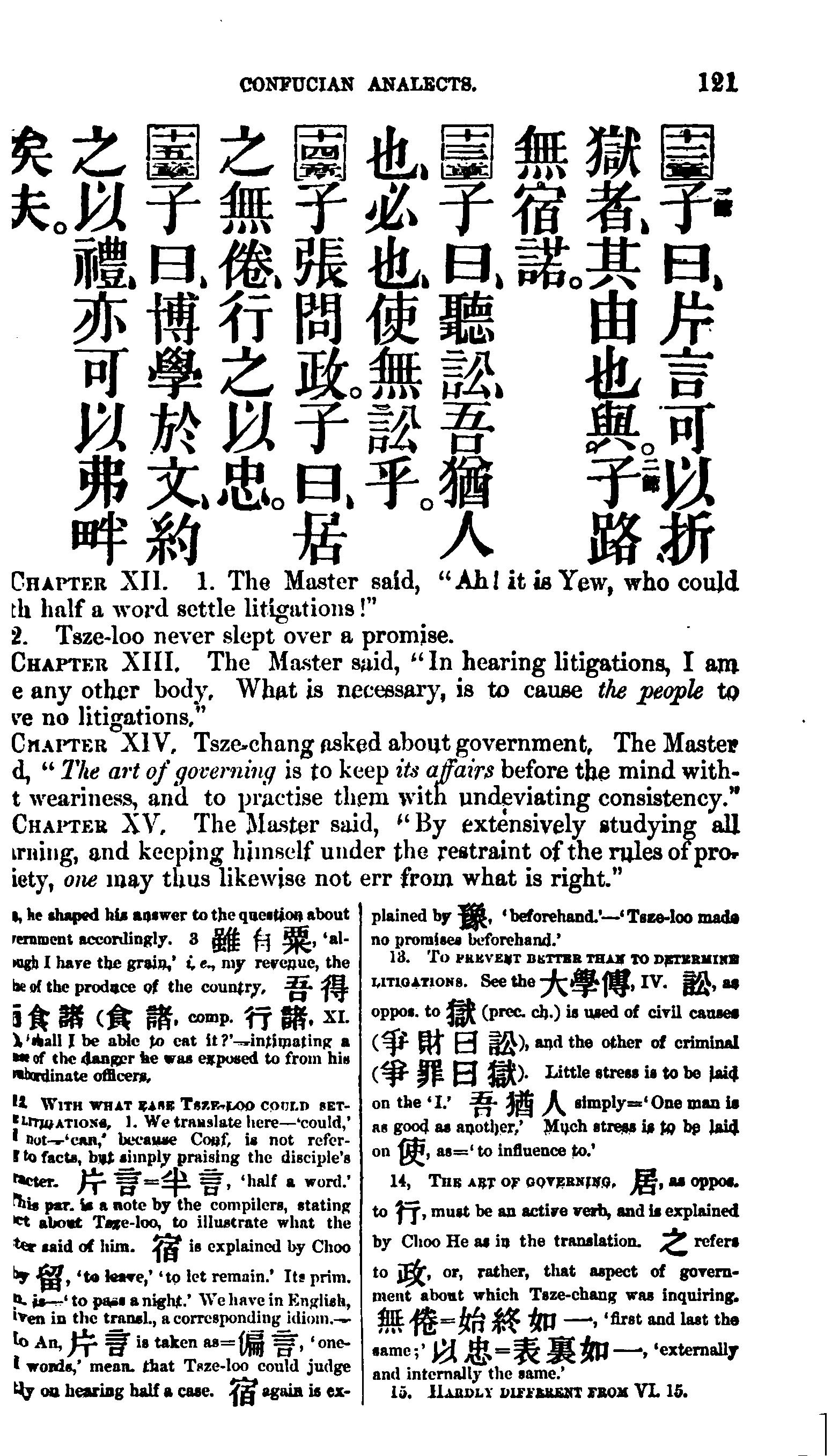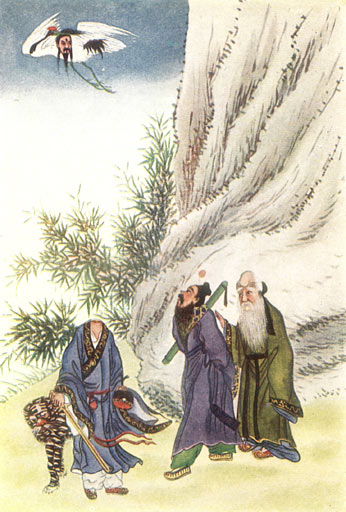|
Lai (state)
Lai (), also known as Láiyí (), was an ancient Dongyi state located in what is now eastern Shandong Province, recorded in the '' Book of Xia''. Tang Shanchun () believes ''lái'' means "mountain" in the ancient Yue language (古越语), while thYue Jue Shu() says ''lai'' means "wilderness". History Lai was a traditional enemy of the State of Qi to its west. As soon as Jiang Ziya, the first ruler of Qi, was enfeoffed at Qi, the state of Lai attacked its capital at Yingqiu. In 567 BC, Lai attacked Qi but was decisively defeated by Duke Ling of Qi, and its last ruler Furou, Duke Gong of Lai, was killed. Lai was a large state, and Qi more than doubled in size after annexing Lai. The people were moved to Laiwu, where |
Qi (state)
Qi, or Ch'i in Wade–Giles romanization, was a state of the Zhou dynasty-era in ancient China, variously reckoned as a march, duchy, and independent kingdom. Its capital was Linzi, located in present-day Shandong. Qi was founded shortly after the Zhou overthrow of Shang in the 11th centuryBC. Its first marquis was Jiang Ziya, minister of King Wen and a legendary figure in Chinese culture. His family ruled Qi for several centuries before it was replaced by the Tian family in 386BC. In 221BC, Qi was the final major state annexed by Qin during its unification of China. History Foundation During the Zhou conquest of Shang, Jiang Ziya, a native of Ju County served as the chief minister to King Wu. After King Wu's death, Ziya remained loyal to the Duke of Zhou during the Three Guards' failed rebellion against his regency. The Shang prince Wu Geng had joined the revolt along with the Dongyi states of Yan, Xu, and Pugu. These were suppressed by 1039 BC a ... [...More Info...] [...Related Items...] OR: [Wikipedia] [Google] [Baidu] |
Yingqiu
Linzi () was the capital of the ancient Chinese state of Qi during the Zhou dynasty. The ruins of the city lie in modern-day Linzi District, Shandong, China. The city was one of the largest and richest in China during the Spring and Autumn Period. Upon occupying Linzi in 221 BC, King Ying Zheng of Qin completed his conquest of the Chinese rival states and declared himself the first emperor of China shortly afterwards. The ruins of the ancient city were excavated in 1926 by Japanese archaeologists and in 1964 by Chinese archaeologists. Layout Linzi covered an area of around with the city built between two parallel rivers that ran north–south, the Zi River to its east and the old course of the Xi River to its west. The city was surrounded by a perimeter wall of rammed earth. The city consisted of an outer city and an inner city. The outer city wall reached a maximum of in base width, averaging between in width. The inner city wall reached a maximum of in base width. T ... [...More Info...] [...Related Items...] OR: [Wikipedia] [Google] [Baidu] |
Ancient Chinese States
Ancient Chinese states () were typified by variously sized city-states and territories that existed in China prior to its unification by Qin Shi Huang in 221 BCE. In many cases these were vassal states and fiefs established in the '' fengjian'' system characterized by tributes paid to the ruling Zhou dynasty (1046–256 BCE). Such states and fiefs would again emerge during later dynasties as a political expedient when required. Rulers of these states were known as ''zhuhou'' (). Background According to the sinocentric viewpoint and the Mandate of Heaven, China was the center of the world and the incumbent emperor its only ruler; all other would-be potentates and rulers were merely vassals of the Middle Kingdom. As a result, from the earliest times the Chinese viewed the world as a series of concentric spheres of influence emanating outward from their capital. Within the closest circle lay the vassal states who pledged allegiance to the Zhou ruler. Apart from the Zhou dyna ... [...More Info...] [...Related Items...] OR: [Wikipedia] [Google] [Baidu] |
Yeren (Zhou Dynasty)
__NOTOC__ The ''yeren'' ( zh, t=野人, p=Yé Rén, l=field/rural people) were peasants and commoners under the ancient Zhou dynasty China . Living mostly in underdeveloped rural areas, they were considered uncivil people by the upper class ''guoren'' (), who regarded themselves as cultured citizens living within the walls of larger urban settlements. Zilu, one of Confucius's favorite disciples, was considered to be one and the ''Analects'' includes a passage giving the ''yeren'' primacy over the Zhou in having undergone the influence of "ritual and music". See also * Hua–Yi distinction The distinction between ''Huá'' and ''Yí'' ( zh, t=, p=Huá Yí zhī biàn), also known as Sino–barbarian dichotomy, is a historical Chinese concept that differentiated a culturally defined "China" (called Huá, Huaxia , or Xià ) from cultur ... Notes References Citations Bibliography * {{citation , last=Eno , first=Robert , contribution=The Background of the Kong Family of Lu and ... [...More Info...] [...Related Items...] OR: [Wikipedia] [Google] [Baidu] |
Mencius
Mencius ( ); born Mèng Kē (); or Mèngzǐ (; 372–289 BC) was a Chinese Confucian philosopher who has often been described as the "second Sage", that is, second to Confucius himself. He is part of Confucius' fourth generation of disciples. Mencius inherited Confucius' ideology and developed it further. Living during the Warring States period, he is said to have spent much of his life travelling around the states offering counsel to different rulers. Conversations with these rulers form the basis of the ''Mencius'', which would later be canonised as a Confucian classic. One primary principle of his work is that human nature is righteous and humane. The responses of citizens to the policies of rulers embodies this principle, and a state with righteous and humane policies will flourish by nature. The citizens, with freedom from good rule, will then allocate time to caring for their wives, brothers, elders, and children, and be educated with rites and naturally become bette ... [...More Info...] [...Related Items...] OR: [Wikipedia] [Google] [Baidu] |
Laiwu
Laiwu () was a prefecture-level city in central Shandong Province, China. Bordered the provincial capital of Jinan to the north, Zibo to the east and Tai'an to the southwest, it was the smallest prefecture-level city in the province. It had a population of 1,298,529 as of the 2010 census, all living in the built-up (or metro) area made of 2 urban Districts and became part of Jinan in 2019 and 907,839 living in urban area. Administration The prefecture-level city of Laiwu administered two county-level divisions, both of which were districts. * Laicheng District (; ) * Gangcheng District (; ) They were further divided into 19 township-level divisions, including 14 towns, one townships and four subdistrict A subdistrict or sub-district is an administrative division that is generally smaller than a district. Equivalents * Administrative posts of East Timor, formerly Portuguese-language * Kelurahan, in Indonesia * Mukim, a township in Brunei, In ...s. Since the 1st Ja ... [...More Info...] [...Related Items...] OR: [Wikipedia] [Google] [Baidu] |
James Legge
James Legge (; 20 December 181529 November 1897) was a Scottish linguist, missionary, sinologist, and translator who was best known as an early translator of Classical Chinese texts into English. Legge served as a representative of the London Missionary Society in Malacca and Hong Kong (1840–1873) and was the first Professor of Chinese at Oxford University (1876–1897). In association with Max Müller he prepared the monumental '' Sacred Books of the East'' series, published in 50 volumes between 1879 and 1891. Early life James Legge was born at Huntly, Aberdeenshire. He enrolled in Aberdeen Grammar School at age 13 and then King's College, Aberdeen at age 15. He then continued his studies at Highbury Theological College, London. Mission to China and family Legge went, in 1839, as a missionary to China, but first stayed at Malacca three years, in charge of the Anglo-Chinese College there. The College was subsequently moved to Hong Kong, where Legge lived for nearly ... [...More Info...] [...Related Items...] OR: [Wikipedia] [Google] [Baidu] |
Zuo Qiuming
Zuo Qiuming, Zuoqiu Ming or Qiu Ming (556–451 BCEZhou, Jixu (May 2011"Confucius and Lao Zi" Their Differing Social Foundations and Cultures ''Sino-Platonic Papers'' 211. p. 2 or 502 – 422 BCE) was a Chinese historian who was a contemporary of Confucius that lived in the State of Lu during the Spring and Autumn period of ancient China. He is a historian, litterateur, thinker, essayist and worked as a historical official of Lu. The influential historical narrative '' Zuozhuan'' ("Commentary of Zuo") is traditionally attributed to him; as well as '' Guoyu'' ("Discourses of the States"). One tradition, according to the ''Records of the Grand Historian'', holds that he was blind.Sima Qian, ''Shiji''"Grand Historian's Autobiographical Postface" quote: "左丘失明,厥有國語" In the ''Analects'', Confucius complimented Zuo Qiu Ming's moral stance and conducts; he also received praises for his academic contributions. Ideology The basic philosophical outlook of Zuo Zh ... [...More Info...] [...Related Items...] OR: [Wikipedia] [Google] [Baidu] |
Duke Ling Of Qi
Duke Ling of Qi (; died 554 BC) was from 581 to 554 BC ruler of the State of Qi, a major power during the Spring and Autumn period of ancient China. His personal name was Lü Huan (呂環), ancestral name Jiang ( 姜), and Duke Ling was his posthumous title. Duke Ling succeeded his father Duke Qing of Qi, who died in 582 BC after 17 years of reign. Attack from Jin In 572 BC, Duke Dao of the State of Jin attacked Qi. Duke Ling made peace with Jin by sending his son Prince Guang (later Duke Zhuang II of Qi) to Jin as a hostage. Nine years later Prince Guang was made the crown prince of Qi. Annexing the State of Lai In 567 BC, the fifteenth year of Duke Ling's reign, the State of Lai attacked Qi but was decisively defeated. The Qi army counterattacked, killed the Lai ruler Duke Gong, and conquered the entire state. Lai was a large Dongyi state to the east of Qi, and the state of Qi more than doubled the size of its territory after annexing Lai. Battle of Pingyin In 555 BC ... [...More Info...] [...Related Items...] OR: [Wikipedia] [Google] [Baidu] |
Jiang Ziya
Jiang Ziya ( century BC – century BC), also known by several other names, was a Chinese noble who helped kings Wen and Wu of Zhou overthrow the Shang in ancient China. Following their victory at Muye, he continued to serve as a Zhou minister. He remained loyal to the regent Duke of Zhou during the Rebellion of the Three Guards; following the Duke's punitive raids against the restive Eastern Barbarians or ''Dongyi'', Jiang was enfeoffed with their territory as the marchland of Qi. He established his seat at Yingqiu (in modern Linzi). Names The first marquis of Qi bore the given name Shang. The nobility of ancient China bore two surnames, an ancestral name and a clan name. His were Jiang (姜) and Lü (呂), respectively. He had two courtesy names, Shangfu (尚父; lit. "Esteemed Father") and Ziya (lit. "Master Ivory, Master Tusk"), which were used for respectful address by his peers. The names Jiang Shang and Jiang Ziya became the most common aft ... [...More Info...] [...Related Items...] OR: [Wikipedia] [Google] [Baidu] |
Changle County
Changle County () is under the administration of Weifang Weifang () is a prefecture-level city in central Shandong province, People's Republic of China. The city borders Dongying to the northwest, Zibo to the west, Linyi to the southwest, Rizhao to the south, Qingdao to the east, and looks out to the ..., in Shandong Province. The ancient Kingdom of Beihai was located to the west of present-day Changle County. Administrative divisions As 2017, this county is divided to 5 subdistricts and 4 towns. ;Subdistricts ;Towns Climate References * Counties of Shandong Weifang {{Shandong-geo-stub ... [...More Info...] [...Related Items...] OR: [Wikipedia] [Google] [Baidu] |




